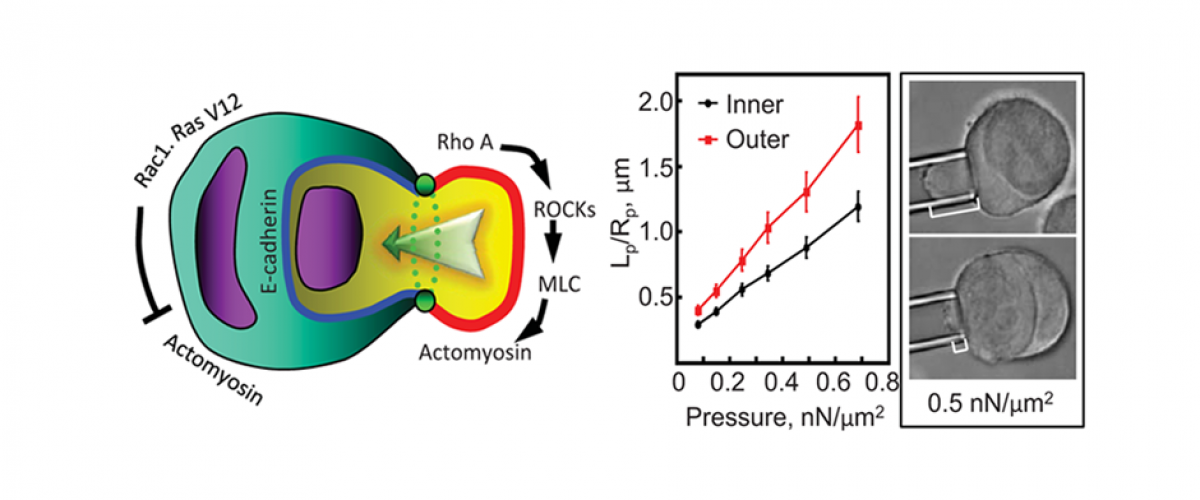
For decades, pathologists have known that formation of cell-in-cell structures, where one cell engulfs another (entosis), could be frequently observed in human tumors. We found that these structures require cell-cell adhesion and a mechanical differential between the inner and outer cells. Specifically, the inner cell has ~2-fold greater elasticity than the outer cell. This mechanical differential comes from inactivation of myosin II in the outer cell and activation in the inner cell. Major human oncogenes such as activated KRAS are sufficient to create the mechanical differential by down-regulating Rho pathways that normally activate myosin II. At least in culture, this mechanical heterogeneity facilitates cell-cell competition where the inner (stiffer) cell loses and the outer (softer) cell wins. For more information, please see Sun et al. Cell Res. 2014 and Hamann et al. Cell Rep. 2017.